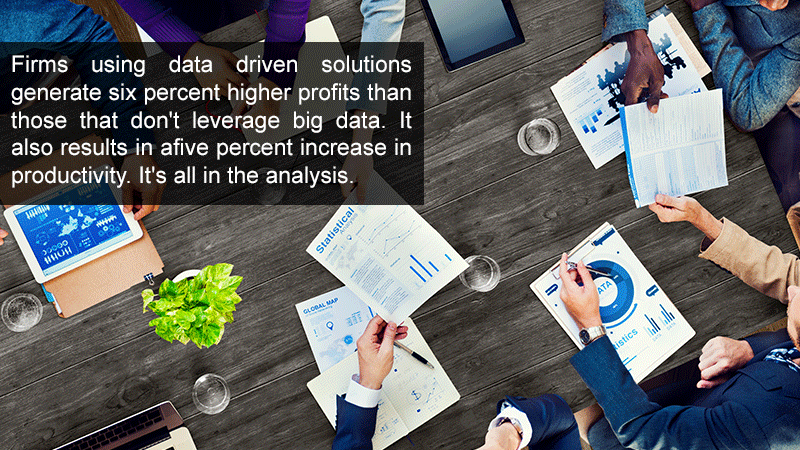Big Data Strategy – How to Break Down Silos and Drive Organizational Change
Nearly every company goes through some organizational growing pains. One common development, departmental silos, occurs at some point. Successful companies break down a silo, a department that protects its information, keeping it from other departments. Silos cause growth breakdowns, so continued growth requires their eradication.
Although it may be tempting to assume these develop on their own, it mirrors the parent-child relationship. Departments draw both motivations and habits from leadership. In regard to big data, a department functioning as a silo withholds its data, hoarding its potential contribution to inter-departmental planning and development. A determined organization breaks down silos by instituting key organizational changes.
Create a Unified Front
Just as silos develop when departments copy leadership, leadership can guide organizational change by setting the example. An organization’s employees know where bottlenecks exist and what problems exist. Ignoring them will only cause resentment. You can re-unify an organization by openly admitting the issues and working with employees to build a better, unified way in five key steps.
1. Work together to form a shared vision. This forms an end-to-end-to-end cycle. Begin by developing organizational and departmental long-term goals with the employees and departments. Developing key initiatives together often occurs in startups, but becomes lost during growth to medium and large businesses. Address contextual issues that form the core of the silo problem. Change the attitudes and perceived threats that created them to create a unified team or company mentality with a company culture of empowerment and trust.
2. Everyone works together to take the elephant to the zoo. As an organization, once you identify the proverbial elephant in the room, you must work together to get the elephant out of your organization permanently. That means executives, management and employees must work together. Educate employees on how they can make a difference and what is or is not appropriate.
3. Provide motivation and positive incentives. Each person and department has different motivations and incentives. Leadership must uncover these and build a rewards program that suits the organization members. In a large corporation, you may have developed a rewards program for consumers. Think along the same lines for employees. Motivation and incentives drive the common goal and productivity.

4. Work on your common goal as you would another major project. Set a timeline, milestones and measure progress. At regular organizational meetings, hold each employee accountable for their assigned task. Consistently reinforce positive behaviors and give regular feedback to drive improvements.
5. Foster collaboration through a unified creation. Do this by creating projects that require cross-departmental collaboration. Avoid making long, large group meetings a component. Instead, use frequent, shorter, small group meetings, varying each department’s participants. Provide frequent feedback.
While identifying the problem and working on internal changes, you can leverage big data to speed things along. Technology can help show departments how their work helps one another and the organization as a whole.
Promote a Data-Driven Culture
Although technology cannot solve the problem for your organization, it provides a key element in the solution. Leadership must teach an integrated view of the business and leverage tools that illustrate it. Leverage big data holistically and apply reporting tools similarly. A focus on data democratization and data literacy helps each department recognize the equal importance if other departments. Promoting a data-driven culture illustrates the importance of data to the organization. It also provides key insights to growing the organization.
Predicting and Optimizing Business Outcomes
Big data helps unify an organization by illustrating the connections between departments. It also helps increase the bottom line. Firms using data-driven solutions generate six percent higher profits than those that don’t leverage big data. It also results in a five percent increase in productivity. It’s all in the analysis. The most successful companies leverage predictive models to turn data into consumer purchase behaviors and predictions. This drives strategy to optimize outcomes.
One of the current champions in the use of predictive analytics only entered the business scene three years ago. Athleisure brand, Fabletics, created a fun lifestyle quiz for its new customers. Their answers tell the company what outfits to send each month to each individual, but collectively drive future season’s designs, plus in-store and online stock. The company also combines their customer locations with data on competitor retail locations to determine where to site its challenge stores. It works. In three years, the company has generated $250 million, entered ten countries and become the major challenger to Amazon.com for casual sportswear.
Breaking down silos creates a more unified company with a shared vision and collaborative culture. The freed data combines with data from other departments to provide a complete company and consumer picture. Directing this data into predictive analysis tools drives up profits and productivity. Using big data reinforces every department’s importance through its reveals. Contact Starr & Associates for help getting started breaking down silos and crunching big data to grow your company.
